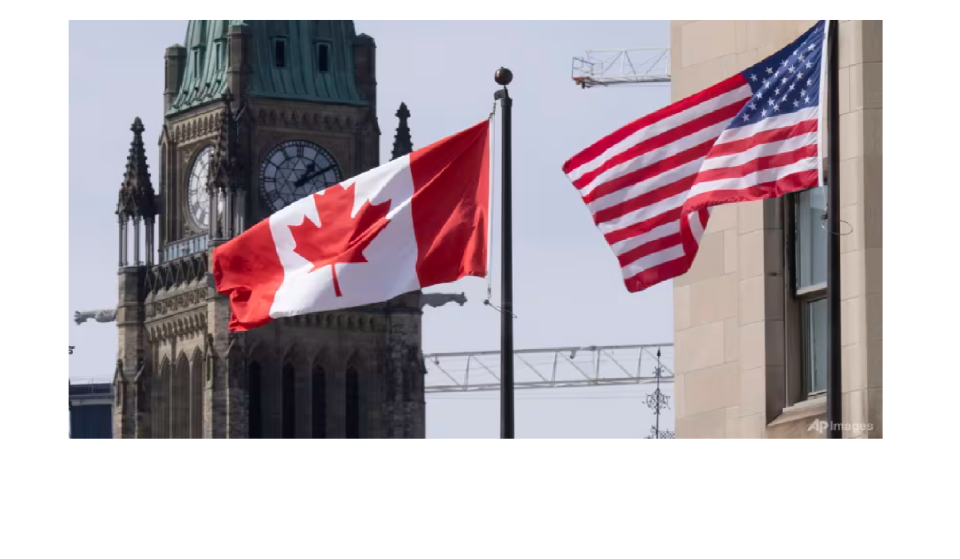- Canadian crude will continue to be consumed in midcontinent US, while TMX flows more to Asia
- Mexico to shift as much as 600,000 kb/d to other markets
- US sees modestly higher refined product prices, which lowers overall oil demand 50,000 b/d by 2026
The US oil tariffs on Canada and Mexico would initiate a significant shift in crude flows in North America as higher prices would push a portion of US imports into overseas markets, says Woodmac analysts.
According to the report “How would Trump tariffs affect North American oil markets?” Proposed US tariffs of 10% and 25% on Canadian and Mexican oil products respectively would alter crude flows for all three countries. Higher ensuing prices would ultimately affect demand in the US, although the impact is expected to be softer than a more disruptive 25% tariff on Canadian oil.
“A wide range of scenarios are still at play, as the implementation of tariffs has been delayed by a month,” Dylan White, principal analyst, North American Crude Markets, for Woods has said. Adding further Dylan said: “The uncertainty surrounding US policy is likely to continue; ongoing talks could lead to a lifting of tariffs or could spiral into steeper penalties on oil imports. As the tariffs currently stand, the North American market will see several impacts.”
In a 25% tariff scenario on Mexican oil, analyzing its impacts on Mexico, Woodmac says it expects Mexico exports to largely shift away from the US to other outlets in Europe and Asia. This according to the report could impact ~600 kb/d of imports from Mexico into the US. “However, the blow could be softened by the shutdown of the Lyondell Houston refinery and the start-up of Pemex’s Dos Bocas refinery,” the report has highlighted.
“Backfill options for heavy barrels in the US crude slate, especially in the US West Coast and US Gulf Coast, says White would need to come from waterborne imports via Latin American and Middle East countries.”
“Iraq, in particular, flexes the largest alternate pool of heavy crude exports. However, these imports are generally cost disadvantaged compared to nearby Canadian and Mexican heavy supply.”
If a 10% tariff scenario arises for Mexico, Woodmac team says they’re expecting that the impact on shipments to the US would be less severe, although regional prices would still be affected to some degree.
“Steeper tariffs on Mexico would likely shift Mayan imports away from the US, with subsequently tighter heavy balances leading to slightly higher relative heavy prices in the US Gulf Coast,” says White. Adding he said: “Beyond that, we expect the higher tariff costs will get backed into wider crude differentials in Mexico and Canada.”
In a 10% tariff scenario on Canadian oil, Woodmac says it expects consumption of Canadian crude to continue to be measured in large quantities especially in the US midcontinent and US Gulf Coast.
“Refineries in the Midcon are landlocked and have limited access to alternate sources of heavy crude and are therefore dependent on Canadian supply,” says White. “However, Canadian outlets to non-US destinations become advantaged. The Trans Mountain Pipeline (including TMX) provides access to the Pacific Basin and would likely facilitate increased shipments of Canadian crude to Asia, and away from the US West Coast, in a tariff scenario.”
Report discloses that re-exports of Canadian crude via the US are not subject to tariffs and would provide optionality to Canadian barrels transiting the US. This is as the team does not see a 10% tariff as substantial enough to shift Canadian barrels away from the US Gulf Coast and into Asia.
Woods say it projects that the tariffs would drive oil demand 50,000 b/d lower in the US by 2026, in part due to modestly higher refined product prices.
This is while maintaining that relief from domestic producers would be unlikely, forecasting measured US Lower 48 production growth in the years to come, to be driven by Majors in the Permian. Producers according to the report would remain cash disciplined, as drilling investment in recent years, Woods discloses, has shown little reactivity to changes in crude prices.
Meanwhile Canada had in a statement, through its Department of Finance of February 1 2025 announced a $155B tariff package in response to what it called “Unjustified U.S. Tariffs.”
“Today, the Honourable Dominic LeBlanc, Minister of Finance and Intergovernmental Affairs, and the Honourable Mélanie Joly, Minister of Foreign Affairs, announced that the Government of Canada is moving forward with 25 per cent tariffs on $155 billion worth of goods in response to the unjustified and unreasonable tariffs imposed by the United States (U.S.) on Canadian goods.
“These countermeasures have one goal: to protect and defend Canada’s interests, consumers, workers, and businesses.
“The first phase of our response will include tariffs on $30 billion in goods imported from the U.S., effective February 4, 2025, when the U.S tariffs are applied. The list includes products such as orange juice, peanut butter, wine, spirits, beer, coffee, appliances, apparel, footwear, motorcycles, cosmetics, and pulp and paper. A detailed list of these goods will be made available shortly.”
Minister LeBlanc also announced that the government intends to impose tariffs on an additional list of imported U.S. goods worth $125 billion. “A full list of these goods will be made available for a 21-day public comment period prior to implementation, and will include products such as passenger vehicles and trucks, including electric vehicles, steel and aluminum products, certain fruits and vegetables, aerospace products, beef, pork, dairy, trucks and buses, recreational vehicles, and recreational boats.”
Ministers LeBlanc and Joly again reiterate “that all options remain on the table as the government considers additional measures, including non-tariff options, should the U.S. continue to apply unjustified tariffs on Canada.”
“Less than 1 per cent of the fentanyl and illegal crossings into the United States come from Canada. We will not stand idly by when our nation is being needlessly and unfairly targeted. The government will defend Canadian interests and jobs. We stand ready to support affected workers and businesses.”
“The U.S. administration’s decision to impose tariffs will have devastating consequences for the American economy and people. Tariffs will upend production at U.S. auto assembly plants and oil refineries, raise costs for American consumers—at gas pumps and grocery stores—and put American prosperity at risk.”
“The government continues to work closely with provincial and territorial governments, as well as business, labour, and other leaders to advance a robust Team Canada response, and to advocate with U.S. decision-makers on behalf of all Canadians to safeguard and strengthen Canada’s economy.”
“This first set of countermeasures is about protecting—and supporting—Canada’s interests, workers, and industries. These U.S. tariffs are plainly unjustified. They are detrimental to both American and Canadian families and businesses. Working with provincial, territorial and industry partners, our singular focus is to get them removed as quickly as possible. Until then, our response will be balanced and resolute,” says Honorable Dominic.
“Canada will not stand by as the U.S., our closest and most important trading partner, applies harmful and unjustified tariffs against us. With these countermeasures, we are defending Canada’s interests and are doing what is best for Canadians and our economy,” Honourable Mélanie Joly said,

